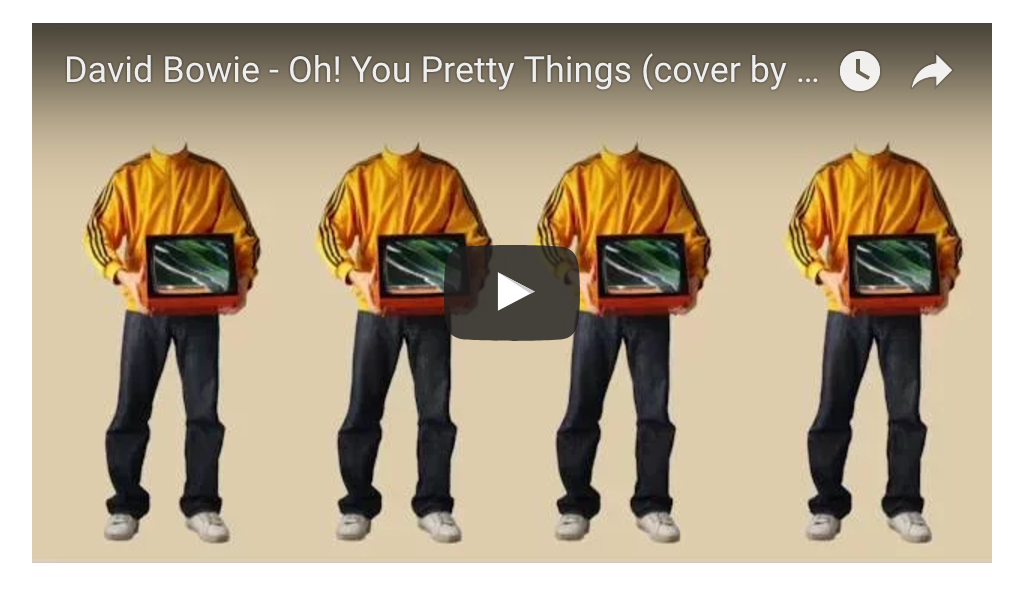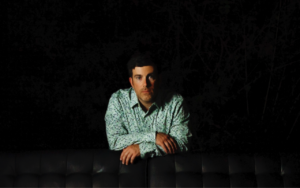
How to legally post a cover song video on YouTube.
Cover song videos are hugely popular on YouTube, and making a cover song video is one of the most proven ways to get new listeners and viewers to check out your other songs, including your original material. Here, we’ll walk you through YouTube licensing laws and how to navigate the platform’s rules.
So let’s say you’ve recorded an awesome new cover version of an existing song, and now it’s time to post the video to YouTube. What do you need to do in order to NOT get your pants sued off?
First, an important disclaimer: I’m not a lawyer. If you’re worried about legal issues, you should consult an attorney. That being said, CD Baby manages a vast catalog of songs and videos on YouTube, and we have lots of experience from which we draw upon to offer the general advice that follows. We go into greater depth in Music Copyright 101, if you’re looking for even more information.
So let’s start by understanding the various rights that do and don’t come into play when posting a cover song video.
Cover song videos are NOT protected by a mechanical license.
Once a song is published, you have the right to cover it (as a recording, but NOT as a video).
“Published” under the Copyright Act is defined as:
…the distribution of copies or phonorecords of a work to the public by sale or other transfer of ownership, or by rental, lease, or lending. The offering to distribute copies or phonorecords to a group of persons for purposes of further distribution, public performance, or public display constitutes publication. A public performance or display of a work does not of itself constitute publication.
In order to distribute and sell your own version of that cover song, you have to secure what is know as a mechanical license from the publisher of the song, and pay them the appropriate mechanical royalties.
BUT… a mechanical license (often secured through an agency such as Harry Fox or CD Baby’s cover song licensing service) protects you ONLY for the distribution of a cover song sound recording, NOT the associated cover song video. So while you absolutely MUST acquire the necessary mechanical license for a cover song before you press CDs or sell downloads, that license is meaningless when it comes to the video you want to post on YouTube.
As entertainment attorney Christiane Cargill Kinney says:
Assuming that a single license is going to cover you for every usage of the song is kind of like assuming that your doctor will accept pet insurance to treat your laryngitis. You’re dealing with two (or more) completely different animals.
What license do you need for a cover song video?
Before I answer that question, I’m going to tell you a secret: Almost NO ONE that creates cover song videos is jumping through the hoops to secure the appropriate license before they post those videos to YouTube.
Are they getting sued? Are they having their videos smacked with a copyright violation notice or take-down request? Occasionally, yes. But by and large, no.
Why not? Well, YouTube has developed a monetization system to allows rights holders and content creators to bypass the usual licensing process for cover song videos. But before we get into that, let’s discuss the license you WOULD need to secure if you wanted to be sure your cover song video was published by-the-book, on the up-and-up, and totally legit and legal eagle.
You need… a sync license.
Some of the many rights granted to the publisher of a composition are:
- the right to decide who gets to “synchronize” that song with images
- the right to determine the circumstances under which the song is “synched”
- and the right to set terms for monetary compensation
Getting a sync license (or synch license) from the publisher of the song allows you to pair their composition with moving images in your cover song video.
Note that those same rights are granted to the owners of sound recordings too, but since you’re making your own version of an existing song, you won’t need to deal with whichever entity owns the master recording. You just need to negotiate with the publisher.
What if my cover song video is just a slideshow or a single still image?
In the eyes of the law, that’s still considered a video — and still requires you to get a sync license.
“Negotiating” with the publisher. Good luck.
Since the publisher holds all the cards in this circumstance, they can ignore your sync license request. They can tell you to take a hike. They can say, sure you can post a cover video of our song, as long as you pay us a bazillion dollars.
Or they can be quite reasonable and grant you permission as long as you meet some set of realistic criteria and pay them the agreed upon upfront fee or ongoing royalty split (or both).
Sound like a lot of work? It does to most artists, especially YouTubers who are often creating a new cover song video every week. So that’s where this next licensing method comes in handy.
Content ID: YouTube’s sync-licensing workaround.
YouTube’s impressive Content ID system analyzes elements of every single video uploaded to the platform to determine if a video contains any copyrighted material (sound recordings, composition, video, etc.). If so, YouTube’s Content ID system automatically places a claim on that video on behalf of the rights holder.
In other words, if you upload a cover song video, YouTube should be able to tell that you do NOT own the rights to the song; you will see a claim placed on the video by the publisher, and any ad revenue generated by your video will be paid to that rights holder.
This is the same technology that allows CD Baby to monetize the usage of sound recordings across all of YouTube on behalf of our artists.
Where can I see if anyone has placed a Content ID claim on my cover song videos?
It’s pretty simple. Once you’ve posted the video to YouTube, go to the copyright notices section of your Video Manager.
If you see a claim, it doesn’t necessarily mean you’re “in trouble.” As YouTube explains:
In most cases, getting a Content ID claim isn’t a bad thing for your YouTube channel. It just means, “Hey, we found some material in your video that’s owned by someone else.”
It’s up to copyright owners to decide whether or not others can reuse their original material. In many cases, copyright owners allow the use of their content in YouTube videos in exchange for putting ads on those videos.
These ads may play before or – if the video is longer than 10 minutes – during the video.
Let’s say the publisher does NOT want other artists posting cover videos of their song willy-nilly. What then?
Content ID gives publishers the ability to:
- Block videos — so people wont’ be able to search for or view your cover song video.
- Restrict viewing in certain territories/countries — so people in, say, Germany wouldn’t be able to view the video.
- Mute a video — so people would be able to watch the video, but no sound would play. Bummer!
- Block certain platforms — so people can only view the video on particular devices, apps, or websites.
YouTube’s Content ID isn’t a perfect solution.
It’s true, you COULD STILL get slapped down or sued by the publisher. But that is very rare these days. Most publishers understand that monetizing cover song videos through YouTube ads can add up to real revenue. Better to be making some money (with little to no effort of their own) from artists who are excited about sharing their songs than having to spend time and cash combating cover song videos that weren’t licensed through the official sync channels.
Now, if a publisher is claiming your video and taking SOME or ALL of the revenue generated by the YouTube ads, how can you make money from your cover song video efforts?
Here’s a few ways to generate income:
- Sell the cover song on CD, vinyl, or download and direct your YouTube viewers (through Cards, End Screens, or direct call-to-action) to purchase the track. If you do this, make sure you’ve gotten a mechanical license to sell the cover song!
- Distribute the song to streaming platforms like Apple Music, Spotify, Pandora Premium, and more — and ask your YouTube subscribers to add the track to their streaming playlists.
- Use Patreon and encourage your fans to support you monetarily every time you post a new video.
Hopefully this article helps you choose the right path for you when it comes to posting cover song videos on YouTube. I’d love to see some of your best cover song videos, so please leave a YouTube link in the comments below.
